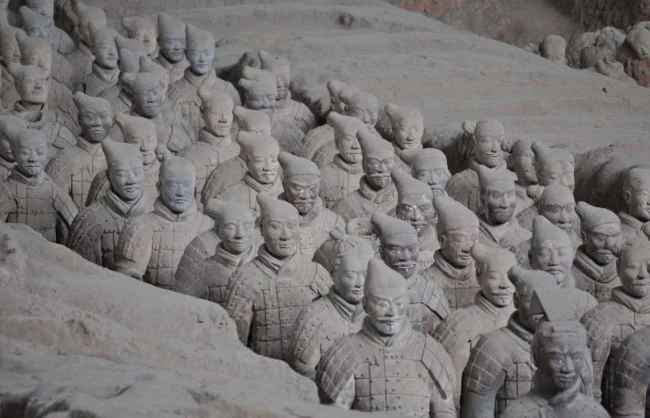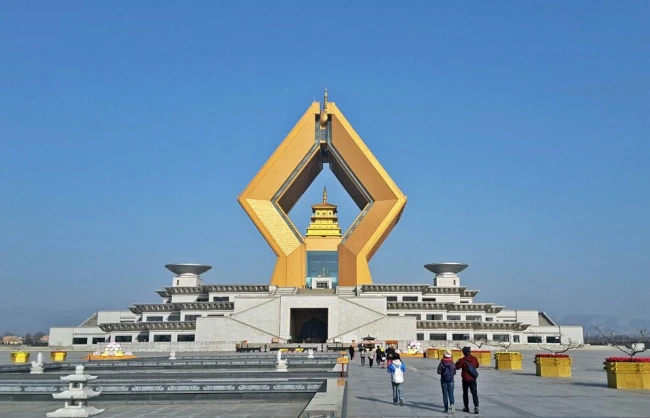The Yangling Mausoleum of the Han Dynasty
Located 30 kilometers north of downtown Xi’an, the Yangling Mausoleum of the Han Dynasty is the burial place of Emperor Jing (188BC-141BC), the fourth emperor of the Western Han Dynasty, and his wife, Empress Wang. Walking along the glass passage in the underground museum could provide you with an immersive visiting experience, which could highlight your Xi’an tour. You will feel like you are in the middle of a real archaeological site, with thousands of terracotta figures, vessels, and chariots around you and even under your feet.
A Full Show of Imperial Burial Customs of the Han Dynasty
Han Yang Ling Mausoleum comprises the Emperor and Empress’ graveyards, southern and northern burial pits, ritual buildings, accompanying tombs, criminal graveyards, and Yangling Town. The emperor’s tomb is surrounded by 81 burial pits laid out in a tight and orderly way.
The 900-meter-long Sacred Way stretches out from the tomb to the east and is flanked by 10,000 accompanying tombs of high officials. This scene is similar to the ancient morning court held by the emperor.
Numerous pottery figures were unearthed from 200 burial pits, including well-armed warriors, elegant palace maids in Han costumes, and countless animals with vivid expressions. The Mausoleum is considered to represent the ancient burial custom, “to attend to the dead as if to attend to the living”. The Yangling Mausoleum of the Han Dynasty is the most intact royal tomb and the most important tangible document in the research of burial customs and civilization of the Han Dynasty.
Now, there are four permanent exhibitions held in Han Yangling Mausoleum. Visitors can feast their eyes on over 10,000 antiques excavated from burial pits around the Emperor’s Tomb.
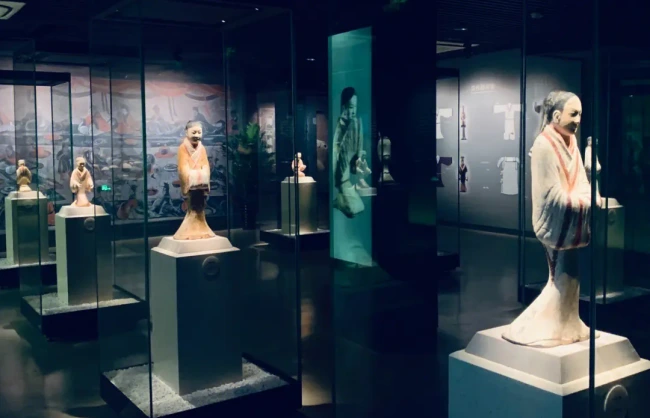
Archaeological Exhibition Hall
Following the visiting route, visitors can have a general idea of Emperor Jing and the construction and excavation of this imperial mausoleum through three chapters.
The first part introduces the concepts of governing and the historical contributions of Emperor Jing, who opened a golden era of harmony in early feudal society, together with his father Emperor Wen, which was later regarded as “the Great Reign of Wen and Jing”. Then, visitors can appreciate hundreds of exquisite objects in the second chapter to learn about the culture, political system, and spiritual life back then. In the last part, the protection and management of the mausoleum are presented by pictures and words.
Protection Hall of Burial Pits – An Underground Museum
As mentioned above, around the emperor’s tomb are 81 burial pits and this exhibition hall is an underground museum constructed on 10 of them. Visitors are separated from the pits by the glass passage which makes it possible to view relics closely from different angles. While walking along, you will find yourself surrounded by pottery figures and earthen pots, and even under your feet lie thousands of antique objects, which could be an unforgettable memory of your Xi’an trip.
Pottery figures unearthed in the Yangling Mausoleum of the Han Dynasty are the most worth seeing. They are only 1/3 of the real people’s size and most of them have the same figure, face, and hairstyle. After studying, archaeologists believe these naked armless warriors were originally fixed with wooden arms and dressed in real clothes. The holes on their shoulders are the connecting points of arms and bodies and in this way, arms could wave and do some suspected actions. As time went by, the dressings and wooden arms decayed.
Among the terracotta figures, there are some lady figures. Some of them have typical Chinese faces and others take the appearance of minor ethnics. Compared with the Terracotta Warriors and Horses of Emperor Qin Shihuang, figures in Hanyangling Mausoleum look more leisurely. Because when Emperor Jing governed China, the whole country was in good peace and ordinary people led a relatively good life.
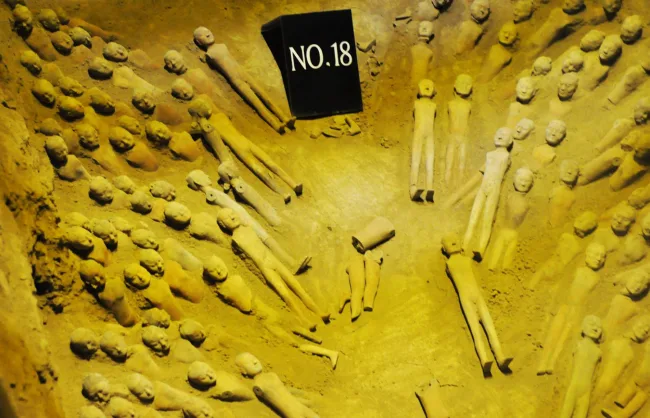
Protection Hall of South Gate Tower
The South Gate Tower of Han Yangling Mausoleum is called Zhuque Gate. It features two sets of tri-platforms, which represent the supreme authority of emperors in ancient China. Zhuque Gate is the oldest, the largest, and the most superior gate tower that has been found in imperial mausoleums. After feeling its solemnity, visitors can get inside to wander around the real archaeological site and learn about the evolution of ancient Chinese gate towers.
Site of Sacrifice Constructions
Site of Sacrifice Constructions inside the Yangling Mausoleum of the Han Dynasty used to be the ancestral temple named Deyang Palace, which occupied significant places around the whole graveyard. The site covers an area of 60,000 square meters and it is the best-preserved imperial temple site yet discovered.
How do I get to the Yangling Mausoleum of the Han Dynasty?
It is not very convenient to get to Yangling Mausoleum from Xi’an by bus. But visitors can take metro line 2 to Honghui Yiyuan Beiqu Station. Then take a taxi directly to Hanyangling Mausoleum and you will get to the destination after 15 minutes.
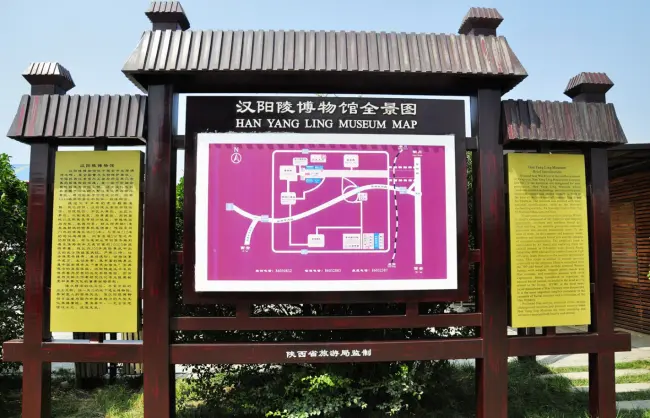
Travel information about the Yangling Mausoleum of the Han Dynasty
Ticket: CNY 70 (March to November) in peak season
CNY 55 (December to February the following year) in low season
Opening hours: 8:30-18:30 (stop ticketing at 17:00) in peak season
8:30-18:00 (stop ticketing at 16:30) in low season
Best time for visiting: All year round
More Travel Tips
The ginkgo forest in the Yangling Mausoleum of the Han Dynasty covers an area of over 66,000 square meters. Every year, ginkgo leaves turn into golden yellow from late October to the end of November and fall off the trees. Wandering around, you will feel like you are in a roll of oil painting and take great photos here. If you travel to Xi’an during this period, do not miss this wonderful scenery.


